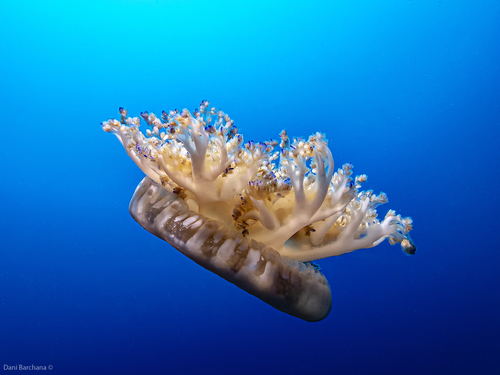
Cassiopea andromeda (Forsskål, 1775)
Flat disc, with 8 short arms; each arm with 4-6 branches ornamented with many filaments and clubs. Usually lies on the sea-floor in calm waters turned upside down. Yellow-brown in color, with paler spots and streaks, some animals of white, blue, and green color.
Schäfer, W. (1955). Eine Qualle aus dem Indischen Ozean in der Agais. Natur und Volk 85: 241-245
1942
UNA
Upside-down jellyfish
Lives in shallow, sandy-muddy, warm, clear waters. Reaches sizes of ≈30 cm.
Feeds on pelagic animals, and on small animals living close to the sea floor. Symbiotic microalgae provide nutrients.
Venomous and can kill fish and other marine organisms that come into contact.
Impact on other species is unknown.
Jellyfish causing a mild sting upon contact. Not highly dangerous.
Predation upon fish larvae and eggs could potentially cause impacts on fisheries.
Appealing for snorkelers/divers.
No
No (painful sting)
Records of Cassiopea andromeda
Sites where Cassiopea andromeda has been recorded in the Hellenic Sea.

